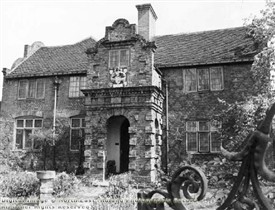Bulwell

Strelley House, Bulwell 1974
www.picturethepast.org.uk
A brief history of the town
Before the mid-1800s residents of Bulwell earned their living mainly from agriculture, framework knitting and bobbin lace-making.
Much of the land was farmed using the old strip farming method and 140 acres of land, Bulwell Forest, remained unenclosed.
From c.1840 onwards, Bulwell’s close proximity to the River Leen lead to its increased industrialisation, with the opening of collieries and blast furnaces, and, for a short period (1840 to 1864), a thriving glove making industry.
From 1800 the population steadily increased from around 1500 in 1800 to over 9000 in 1912.
Passenger trains started running to Bulwell in October 1848 and continued until October 1964 when the service became a victim of Dr Beeching’s cuts. A rail line remained open to transport coal from local collieries. In 1994, Bulwell once again began operating a passenger service with the opening of the Robin Hood line was opened. The Nottingham tram system runs to Bulwell today.
In the 1930s many old buildings were demolished and replaced with new housing. In the 1960s a major development programme saw much of the countryside around the centre of Bulwell developed with roads, housing, schools, shops and other community buildings.
.
This page was added by
H W on 14/06/2012.